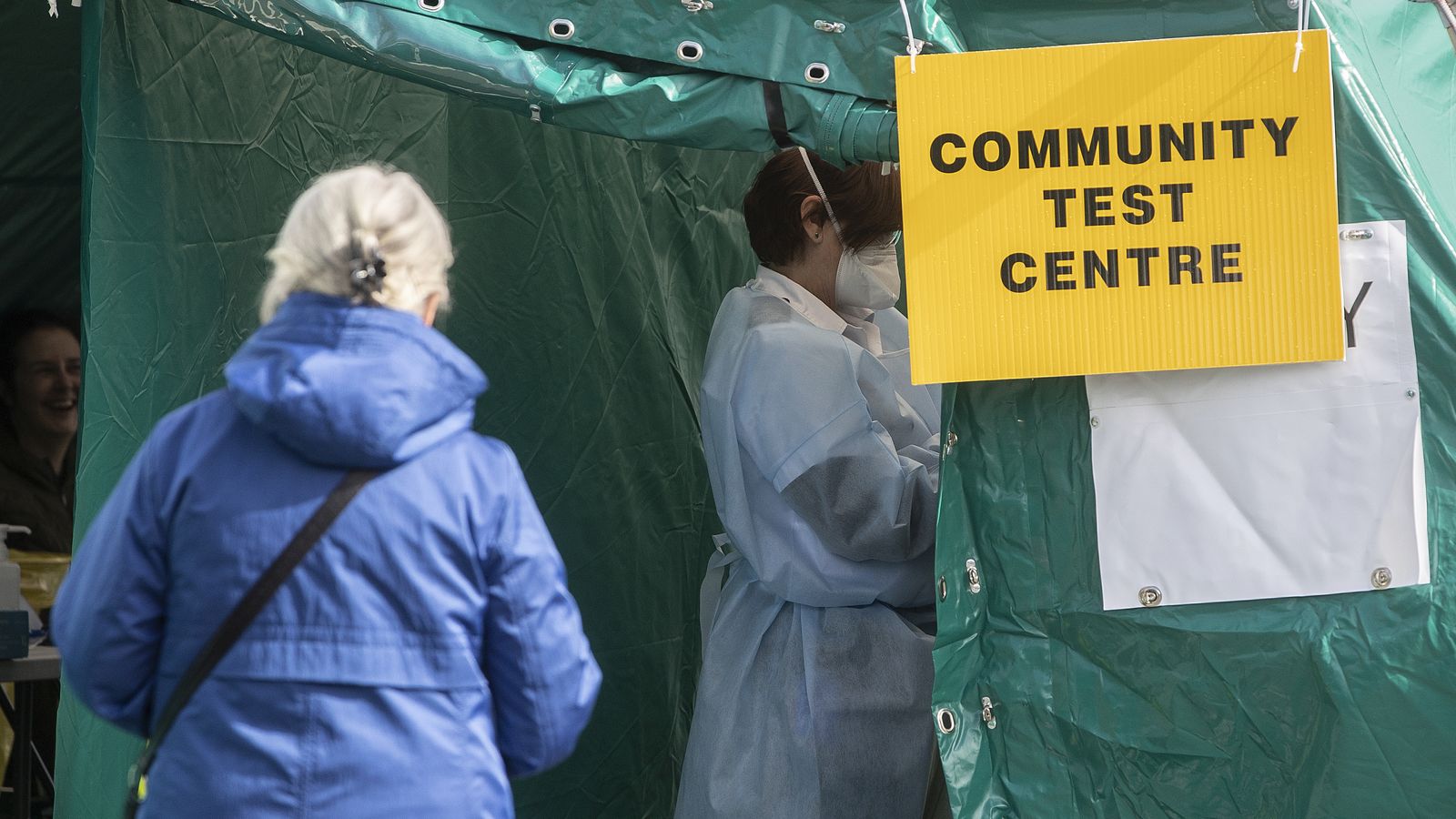The UK’s R number has risen slightly to between 0.7 and 0.9.
Last week it was estimated to have been between 0.6 and 0.9.
The latest growth rate is estimated to be between -5% and -2%, which means that the number of new infections is shrinking by between 2% and 5% every day.
This means the pace at which the epidemic is shrinking has slowed slightly – as last week the growth rate was estimated to be -6% to -3%.
Live COVID updates from across the UK and around the world
R – or the reproduction number – represents the average number of people someone with coronavirus will go on to infect. If the figure is above 1 the epidemic will grow exponentially, but if it is below 1 it is shrinking.
So this week’s R means that every 10 people who test positive with COVID-19 will pass it on to an average of seven to nine others.
Separate data published by the Office for National Statistics (ONS) on Friday shows that cases are “levelling off” in England.
Approximately one in 340 people had the virus outside hospital in England in the week ending 20 March – the same number as the previous week.
This remains the lowest figure since the week ending 24 September, when it stood at one in 470 people.
Experts had braced themselves for a rise in COVID cases following the reopening of schools in England on 8 March – but with a possible two-week delay in people testing positive after coming into contact with the virus – it does not appear to have materialised.
According to the ONS Infection Survey, Scotland had the highest levels of coronavirus in the community in the most recent time period – one in 240 people – up from one in 275 the previous week.
The North West of England has also suffered a rise, and there are “signs” of an increase in positivity rates in Yorkshire and The Humber.
Wales, which has eased restrictions to allow hairdressers, non-essential shops and garden centres to open, had the lowest number of community cases at one in 450 – down from one in 430 the previous week.
In Northern Ireland, one in 320 people are estimated to have had the virus outside of hospital in the week ending 20 March.
Subscribe to the All Out Politics podcast on Apple Podcasts, Google Podcasts, Spotify, Spreaker
The figures come as the government races to vaccinate as many people as possible while Europe’s third wave threatens to spike cases in the UK.
Despite a recent vaccine export row with the EU – and supply problems from India – Housing Secretary Robert Jenrick today stressed the government was “on course” to meet its target of offering a first dose to the top nine priority groups by 15 April and all UK adults by the end of July.
“We’ve built an infrastructure in this country that really is world class, it would enable us to vaccinate even more people than we have done in recent weeks – millions more people,” he told Sky News.
“So the more vaccines we can secure, the more jabs can go into people’s arms. But we do have enough supply in sight to continue to meet our obligations.”






















